 W
WFlour is a powder made by grinding raw grains, roots, beans, nuts, or seeds. Flours are used to make many different foods. Cereal flour, particularly wheat flour, is the main ingredient of bread, which is a staple food for some cultures. Corn flour has been important in Mesoamerican cuisine since ancient times and remains a staple in the Americas. Rye flour is a constituent of bread in central and northern Europe.
 W
WAtta or Chakki Atta is a wholemeal wheat flour, originating from the Indian subcontinent, used to make flatbreads such as chapati, roti, naan, paratha and puri. It is the most widespread flour in the Indian subcontinent.
 W
WBanana flour is a powder traditionally made of green bananas. Historically, banana flour has been used in Africa and Jamaica as a cheaper alternative to wheat flour. It is now often used as a gluten-free replacement for wheat flours or as a source of resistant starch, which has been promoted by certain dieting trends such as paleo and primal diets and by some recent nutritional research. Banana flour, due to the use of green bananas, has a very mild banana flavor raw, and when cooked, it has an earthy, nonbanana flavor; it also has a texture reminiscent of lighter wheat flours and requires about 25% less volume, making it a good replacement for white and white whole-wheat flour.
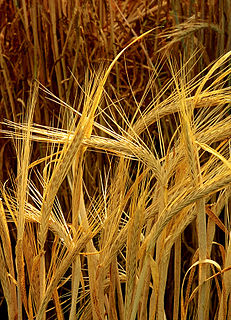 W
WBarley flour is a flour prepared from dried and ground barley. Barley flour is used to prepare barley bread and other breads, such as flat bread and yeast breads.
 W
WCornmeal is a meal ground from dried corn. It is a common staple food, and is ground to coarse, medium, and fine consistencies, but not as fine as wheat flour can be. In Mexico, very finely ground cornmeal is referred to as corn flour. When fine cornmeal is made from maize that has been soaked in an alkaline solution, e.g., limewater, it is called masa harina, which is used for making arepas, tamales and tortillas. Boiled cornmeal is called polenta in Italy and is also a traditional dish and bread substitute in Romania.
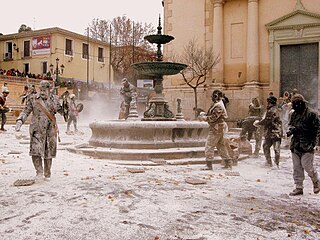 W
WThe annual festival of Els Enfarinats takes place in the town of Ibi in Alicante, Spain on December 28, as part of celebrations related to the Day of the Innocents. Els enfarinats comes from the Valencian word for "breading", and roughly translate to "the breaded ones" or "the floured ones". In the day-long festival, participants known as the Els Enfarinats dress in mock military dress and stage a mock coup d'état. Meanwhile, the Casats i Fadrins, accompanied by a band of street musicians called the Rondalla, known by the name of Sonet, Xirimita and Tabal, tour the city. At 8am, the Els Enfarinats take the city under the slogan "New Justice", and at 9am the Race for Mayor will take place in which it will be decided who is to be Mayor of the Els Enfarinats. Then, the act of L'Aixavegó is carried out in the Plaça de l'Església, where the Els Enfarinats reside. Here, it is decided that those who do not pay the fine will go to jail. At midday, a collection called the Arreplegada dels Enfarinats takes place through the streets of the old quarter and of the city centre of Ibi, terminating in the Sant Joaquim Sanctuary. They exercise their authority under a blaze of fireworks, flour bombs and eggs. At five o'clock in the afternoon the authority of Els Enfarinats comes to an end giving way to the celebration of the traditional Dansà.
 W
WFarina is the name given to a form of milled wheat in the United States of America. The word "farina" is Latin, meaning meal or flour and the Italian and Catalan word for flour. It is made from wheat middlings: the germ and endosperm of the grain, which are milled to a fine consistency and then sifted.
 W
WGofio is a sort of Canarian flour made from roasted grains or other starchy plants, some varieties containing a little added salt. Gofio has been an important ingredient in Canarian cooking for some time, and Canarian emigrants have spread its use to the Caribbean and the Western Sahara. It is also found in Argentina, Uruguay, and Chile, where it is known as harina tostada and is employed in a wide variety of recipes. The gofio commercially available in the Canary Islands is always finely ground, like ordinary flour, despite the definition given in the Spanish Dictionary of the Royal Academy.
 W
WGram flour or besan is a pulse flour made from a type of ground chickpea called the gram chickpea. It is a staple ingredient in the cuisine of the Indian subcontinent, including in Indian, Bangladeshi, Burmese, Nepali, Pakistani, and Sri Lankan cuisines.
 W
WHomepride is a British food brand owned by Premier Foods for pre prepared cooking sauces. Premier Foods also licenses the brand to Kerry Group for the production of flour.
 W
WKama or talkkuna or tolokno is a traditional Estonian and Finnish and Russian finely milled flour mixture. The kama or talkkuna powder is a mixture of roasted barley, rye, oat and pea flour. The oat flour may be completely replaced by wheat flour, or kibbled black beans may be added to the mixture. In Finland kama is made by first steaming grains, then grounding them up and finally roasting them into kama.
 W
WMáchica is a type of flour made from ground toasted barley or other toasted grains. It is used in Bolivian, Ecuadorian and Peruvian cuisine.
 W
WMaida is a white flour from the Indian subcontinent, made from wheat. Finely milled without any bran, refined, and bleached, it closely resembles cake flour. Maida is used extensively for making fast foods, baked goods such as pastries, bread, several varieties of sweets, and traditional flatbreads. Owing to this wide variety of uses, it is sometimes labeled and marketed as "all-purpose flour", though it is different from all-purpose flour.
 W
WManitoba flour, a name chiefly used in Italy, is a flour of common wheat originating in the Canadian province of Manitoba. It is called a "strong" flour to distinguish it from other, weaker flours. The flour strength is indicated by the value of the coefficient "W" measured with a Chopin alveograph: the higher the value, the stronger the flour. A weak flour has a W value lower than 170 while the manitoba has a W value higher than 350.
 W
WMasa is a maize dough that comes from ground nixtamalized corn. It is used for making corn tortillas, gorditas, tamales, pupusas, and many other Latin American dishes. The flour’s dried and powdered form is called masa harina. The flour is reconstituted with water to make a dough before it is used in cooking.
 W
WMesquite flour is made from the dried and ground pods of the mesquite, a tree that grows throughout Mexico and the southwestern US in arid and drought-prone climates. The flour made from the long, beige-colored seedpods has a sweet, slightly nutty flavor and can be used in a wide variety of applications. It has a high-protein, low-glycemic content and can serve as a gluten-free replacement for flours that contain gluten.
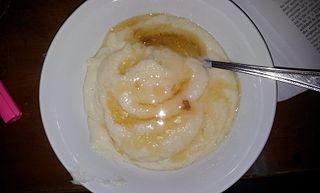 W
WMielie meal, also known as mealie meal or maize meal, is a relatively coarse flour made from maize or mealies in Southern Africa, from the Portuguese milho. It is also known by various other indigenous language names depending on the locality or country. It was originally brought to Africa from the Americas by the Portuguese.
 W
WPeanut flour is made from crushed, fully or partly defatted peanuts. Peanut flour, depending on the quantity of fat removed, is highly protein-dense, providing up to 52.2 grams (1.84 oz) per 100 grams (3.5 oz). Culinary professionals use peanut flour as a thickener for soups, a flavor and aromatic enhancer in breads, pastries and main dishes.
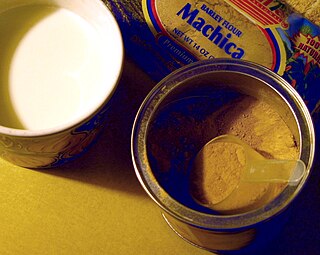 W
WPinole, also called pinol or pinolillo, is roasted ground maize, which is then mixed with a combination of cocoa, agave, cinnamon, chia seeds, vanilla, or other spices. The resulting powder is then used as a nutrient-dense ingredient to make different foods, such as cereals, baked goods, tortillas, and beverages. The name comes from the Nahuatl word pinolli, meaning cornmeal. Today, pinole is generally made by hand using wood-burning adobe ovens and a stone and pestle, and is still consumed in certain, often rural, parts of Latin America. Pinole is considered the national beverage of Nicaragua and Honduras.
 W
WRempeyek or peyek is a deep-fried savoury Indonesian-Javanese cracker made from flour with other ingredients, bound or coated by crispy flour batter. The most common type of rempeyek is peyek kacang ; however, other ingredients can be used instead, such as teri, rebon, or ebi. Today, rempeyek is commonly found in Indonesia and Malaysia, as well as in countries with considerable Indonesian migrant populations, such as The Netherlands and Suriname.
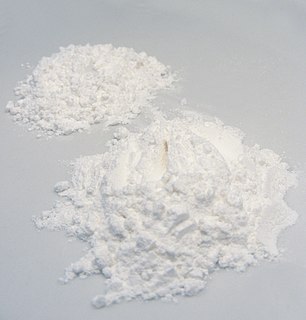 W
WRice flour is a form of flour made from finely milled rice. It is distinct from rice starch, which is usually produced by steeping rice in lye. Rice flour is a common substitute for wheat flour. It is also used as a thickening agent in recipes that are refrigerated or frozen since it inhibits liquid separation.
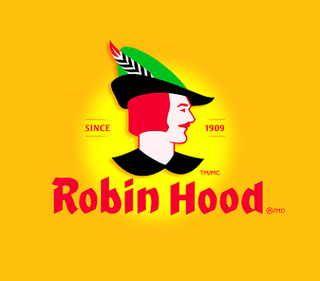 W
WRobin Hood Flour is a brand of flour made by the Horizon Milling division of Cargill. The brand is marketed to the food service and industrial section by Horizon Milling and the consumer retail sector by The J.M. Smucker Company.
 W
WTapioca is a starch extracted from the storage roots of the cassava plant, a species native to the North and Northeast regions of Brazil, but whose use is now spread throughout South America. The plant was brought by the Portuguese to much of West Indies, Africa and Asia. It is a perennial shrub adapted to the hot conditions of tropical lowlands. Cassava copes better with poor soils than many other food plants.